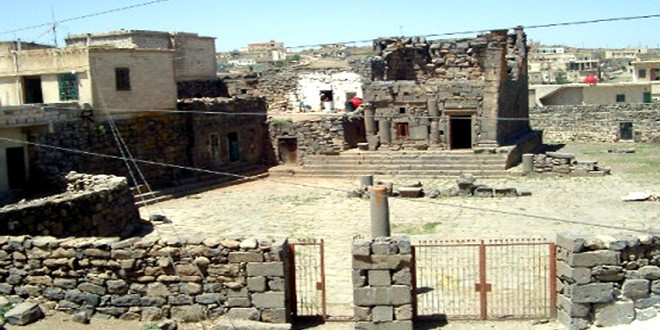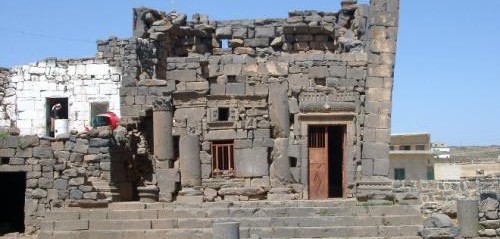Many of the temple’s original columns remain standing, along with substantial portions of its walls and foundations. The façade features Corinthian-style columns topped with elaborately carved capitals. At the heart of the temple lies an elevated platform (cella), which was used to house the statues of the deities.
The temple is adorned with finely carved stone decorations, including solar symbols, geometric motifs, and engraved Greek inscriptions. Built from locally sourced black basalt, the structure possesses a distinctive character that reflects the region’s volcanic geology and architectural heritage.
Al-Mushannaf Temple is among the most distinguished archaeological landmarks in As-Suwayda Governorate. Situated in the town of Al-Mushannaf—once a major urban center during the reign of the Antonine emperors in the 2nd century CE—the temple was dedicated to the worship of the deities Baal Shamin and Helios. It is regarded as one of the most architecturally refined temples in the Jabal al-Arab region, noted for its unique decorative and structural elements.
The temple walls are adorned with symbolic carvings, including religious motifs and Greek inscriptions. Archaeological discoveries from the site include a bearded stone head representing the Nabataean god Dushara and a statue of a warrior bearing a dedicatory inscription—both of which are currently housed in the As-Suwayda Museum.
Despite the passage of time, the temple’s remaining elements offer a clear impression of its original design and stand as a testament to the grandeur of Roman-era civilization in southern Syria.








